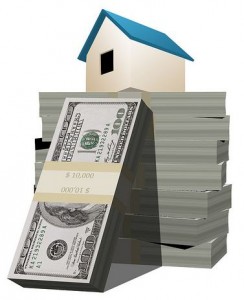We are frequently asked how long the current real estate market or housing cycle will run. Our industry is not short on opinions, predictions, and speculations. This past month, I reviewed the most comprehensive housing report I have read since 2007: the John Burns Real Estate Consulting Home Value Index.
 The report defines housing-cycle risk as a function of demand, supply, and affordability. This is a fairly simple perspective that comes as no surprise. The forecast or outlook is dependent on job growth for demand and excess supply in the form of new construction or foreclosures. On a relative scale compared with the housing market in the U.S., our local markets have limited excess supply at this time.
The report defines housing-cycle risk as a function of demand, supply, and affordability. This is a fairly simple perspective that comes as no surprise. The forecast or outlook is dependent on job growth for demand and excess supply in the form of new construction or foreclosures. On a relative scale compared with the housing market in the U.S., our local markets have limited excess supply at this time.
The Burns report goes on to note that the markets with the most upside are clearly those that experienced the most significant downs. Again, this concept is not overly complex, and the variables are relatively easy to comprehend.
The most stimulating aspect of the report is in the Burns Home Value Index Forecast for December 2017. We have often struggled with the S&P/Case-Shiller and similar indexes, which generally offer perspectives based on 90 to 120 days trailing market performance and do not look forward.
The Burns report cites summary research from nearly 100 economists’ responses to questions about housing appreciation in the U.S. from Q4 2012 through December 2017. The Burns report estimates 35.9 percent appreciation through December 2017, with more than 9 percent already realized through September 2013. The 100 economists’ consensus for that same time frame was 22.9 percent appreciation, with 6 percent already realized.
The Burns report provides regional outlooks on nearly 100 markets. The Bay Area findings are illustrated in the table below:

With the caveat that real estate is local and each neighborhood and home is unique, these forecasts are very reassuring. In particular, the outlook for 2017 is exceptionally encouraging. However, the report illustrates that the majority of the lift in the market will occur in 2014 and 2015, with modest to flat growth in 2016 and 2017.
The opportunity to realize value in real estate and historically low mortgage rates is now. Mortgages will likely exceed 6 percent by 2016, a 30 percent increase from today’s rates.
Your local Pacific Union real estate professional is uniquely positioned to review macro trends and neighborhood specifics to assist you in your residential real estate investments. Please remember that your most significant real estate investment is in your home — which is a place to live and create memories — rather than just your house.
— Mark A. McLaughlin, CEO, Pacific Union
(Image: Flickr/401(K) 2012)
